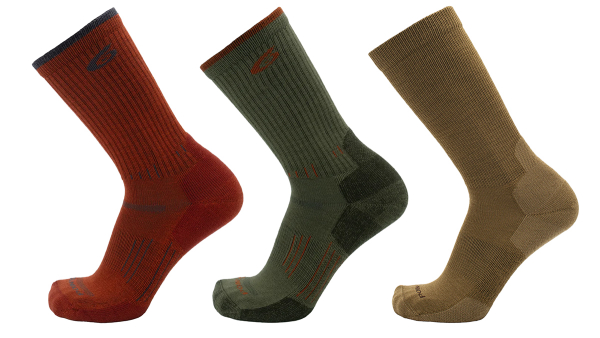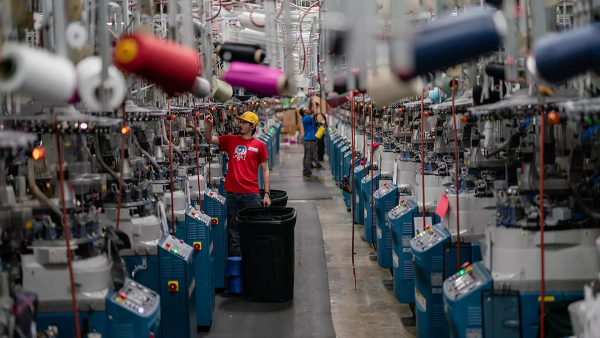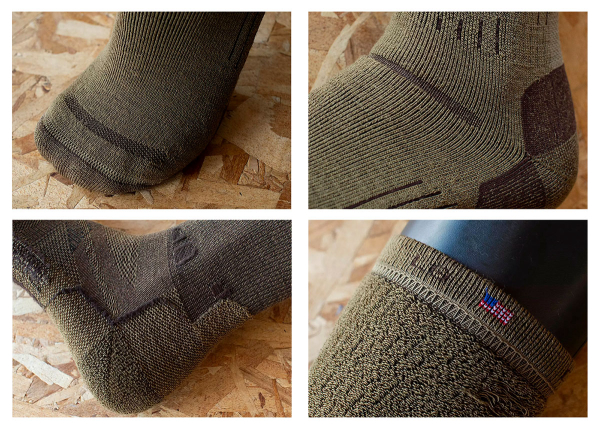Matty told Hatty
About a thing she saw
Had two big horns
And a wooly jaw
— Sam The Sham & The Pharaohs, Wooly Bully, 1965
To me, wool socks were always kind of like the mythical beast referenced in the famous song above—bulky, hot, and beastly on your feet, but perfect for cold weather and even bigger, bulkier boots.
I had plenty of old-school wool socks growing up. All of them came from L.L. Bean because I grew up on the East Coast, in the Mid-Atlantic region. And, well, I went to private school, so the Bean catalog served as our staple haberdashery—just via mail order.
The interwebs had not yet been invented, with Al Gore getting to that later.
These socks were ragg wool socks, which is a coarser, less expensive wool blend. Their mix of dyed and undyed fibers, gives ragg wool its distinctive look.
Today, when you hear “wool,” it’s almost always merino wool being referenced. Merino wool is softer and more breathable, making it a much better choice of wool for clothing items worn directly against the skin.
But wool—whether ragg or merino—still means warm to me. And living in Arizona, with its many months of 100-plus, even 110-plus-degree days, makes the idea of wearing wool, even merino, seem less than appealing.
A couple of months ago, Point6—makers of merino wool apparel, beanies, gaiters, and socks—reached out about sending samples. I explained the Arizona summer heat issue and questioned the wisdom of wearing wool socks.
After a little back and forth, I was assured that “contrary to what many people believe, merino is actually a great choice for hot weather,” and I was offered their extra light socks.

I selected two pairs of their Essential Light Crew (one in Brick and one in Sage) and one of their Tracker Extra Light Crew (in Coyote Brown).
Point6 offers a number of sock styles, and thickness options.
For styles, they can outfit you in No Show, Mini Crew, 1/4 Crew, 3/4 Crew, Crew and OTC or “Over the Calf.” I selected Crew because I planned to wear these mostly with a 7-inch pair of Irish Setter Wingshooter boots.
This is my favorite pair of boots, and besides wearing them when hunting or on the range, they tend to be my daily footwear at trade shows. In fact, in trying to wear them out to the point they finally give up the ghost, I’ve put them through this year’s NRA Show and the NASGW Expo this past October. They still remain comfortable.
I mention that because it was in Dallas—technically Grapevine—at the NASGW’s annual expo and meeting that I decided to test-drive the Point6 merino socks.
My assumption was… well, I’m not sure what my assumption was, other than expecting my feet to get hot and sweaty after a full day on the show floor. Surely, wool socks in a Texas October can’t be the best choice. Right?
Yeah, so that saying about assuming—you know the one—it’s true. 100% true, which is unfortunate since this was a conversation I was having with myself.
I couldn’t have been more wrong about the all-day comfort and feel of merino wool socks. It’s not that I walked around thinking, these are the most comfortable socks I’ve ever had. Actually, I didn’t notice them at all.
My feet didn’t feel hot or fatigued. In fact, I forgot I was wearing merino wool socks until after dinner, when back in my room I finally took off my boots and realized, “Oh, hey, I’m wearing wool socks and never even noticed.”
Now, I admit I didn’t put them through the harshest of tests. For that, I give you what Jodi Stemler wrote about her Point6 socks in ‘Gearing Up for Backcountry Sheep.'
“If you’ve got good boots, don’t forget about good socks. Merino wool socks with extra padding on the balls of the feet and heels make a huge difference in wicking moisture from the feet and preventing blisters.”
I think we can agree that trekking all over God’s creation in search of bighorn sheep is only slightly more taxing than walking through the Gaylord Texan Resort & Convention Center.
So, what exactly sets the Point6 socks apart? And what makes for a good pair of socks?

First, Point6 sources all of its wool from New Zealand before it is spun into yarn in Europe. From there, it’s sent to Chattanooga, Tennessee, where it’s knitted into socks—so yes, their socks are made here in the U.S.
The yarn Point6 uses is made through a process called compact spinning, which uses centripetal force. This process greatly reduces loose fibers, resulting in less wear and pilling. And while the yarn is more compact, it actually has a much softer feel.


According to Point6, the compact spinning process makes their merino wool 25% more durable than ring-spun yarn. I haven’t put enough miles on the socks or put them through enough laundry cycles to confirm this, but I do know they feel very comfortable right now.
As I mentioned, Point6 gives you several style options to choose from, and while I opted for Crew-length socks, you might go with something more suitable for the shoe or boot you spend the most time in.
Point6 doesn’t make just one type of sock. Instead, they offer a variety of cushioning levels. I chose Light and Extra Light due to the fact that I live in one of the hottest states in the U.S. Jodi went with Medium. Other options include Ultra Light, the least amount of cushioning, and Heavy with the most.
The sock’s cushioning comes from the terry looping. Terry looping is the small loops of wool knitted on the inside of the sock that create the cushioning. The more terry looping the greater the cushioning.
Point6 also incorporates specific design features into their socks. All of them utilize a seamless toe closure—which, if you’ve had shoes that were too tight, you know how much of a difference this can make.
The sock design also incorporates specific venting. On the ankle transition and the toe they put a thinner vent without cushion, which allows for better flex in the sock at the transition points and increased long-term durability.

The heel pocket is contoured and deep to keep the sock in place. The area is also reinforced on all socks, with optional additional reinforcement above the heel for added durability.
And if you’ve ever had a problem matching up socks after doing a load of laundry, Point6 stitches the style name, weight/cushioning, and size into the welt. This makes it easier both to pair up the correct socks and to find the style you want for cold-weather hunts or cool autumn hikes.

Thinking ‘socks is socks’ is an outdated way to look at today’s performance socks. Honestly, who knew socks had features beyond thick or thin, and high or low? I’m still wrestling with the fact that wool doesn’t mean having overly hot, sweaty feet.
Now I’m regretting limiting my selection to only crew-length socks and just two weights. Luckily, there are Christmas gift lists to be filled, and I take large.
— Paul Erhardt, Managing Editor, the Outdoor Wire Digital Network